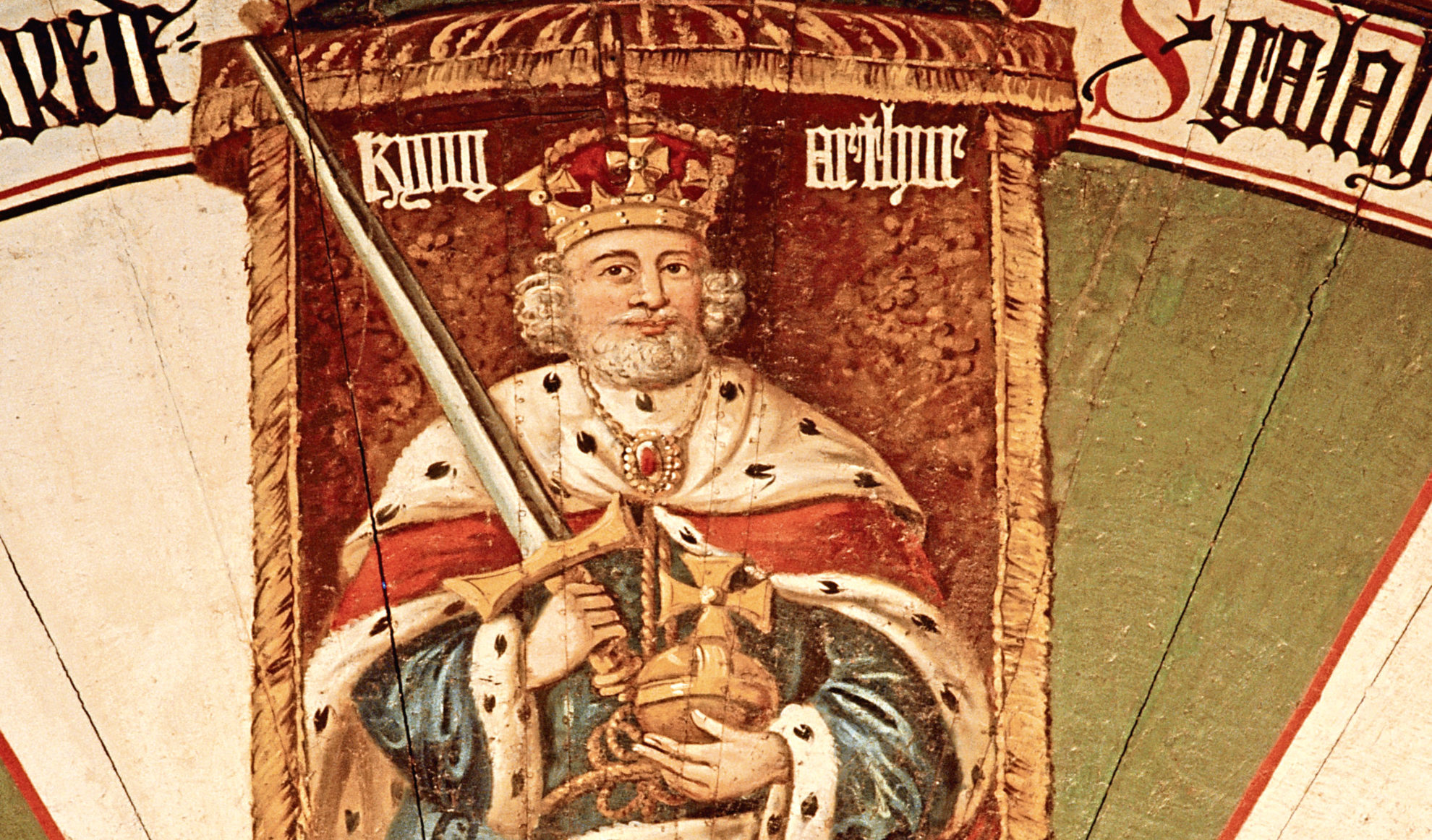
KING Arthur is one of our most famous monarchs.
Tales of his derring-do are manifold and have been best-sellers for centuries.
Arthur was the monarch who led the defence of Britain against the Saxon invaders in the 5th and 6th Centuries, wielding Excalibur, the sword in the stone.
In more recent times, he’s been the subject of more than 80 movies, including a bizarre Cockney-fied version that was basically King Arfur Daley.
There have also been dozens of TV series, with the BBC’s brilliant Merlin the best of the lot.
Away from the big and small screens, there’s an entire industry based on people discovering new “facts” about Arthur or claiming to have found the original site of Camelot.
Last year alone we had a retired school teacher who said he’d discovered Arthur’s birthplace – Barwick-in-Elmet, not far from Leeds – while moon-landing denier Nick Knowles said on live TV that he’d located the site of the Round Table, in Cirencester.
But there’s just one problem – there’s not a single jot of evidence that King Arthur ever existed. Not one.
To be honest, of all the books, films and TV shows, Monty Python And The Holy Grail has as good a claim to historical accuracy as any.
In fact, the legend was dreamt up by a bunch of Benedictine monks who wanted to raise some sweet cashola to rebuild their fire-destroyed monastery by turning it into England’s top tourist destination.
At the end of May 1184, Glastonbury Abbey burned down.
The fire destroyed the church, cloisters and monks’ domestic buildings, and the flames consumed priceless manuscripts, saints’ relics and treasures. The only thing left standing was the bell tower.
But the scheming monks saw opportunity in the ashes of their home.
When reconstruction began, the crafty brothers claimed to have made a miraculous discovery – buried in the churchyard, beneath a pair of leaden crosses, were the remains of none other than King Arthur and his queen, Guinevere.
It was a total sham but the Benedictines had seen the bill for rebuilding their abbey and decided to cash in on “Arthurianism”, which was all the rage in the 1180s.
Half a century earlier, the supposed deeds of Arthur had been recorded in spoof historical form by another Benedictine cleric, Geoffrey of Monmouth, in his A History Of The Kings Of Britain.
Now, ol’ Geoff was telling massive porkies, as his more learned readers well knew, but that didn’t stop his tales becoming monster sellers.
The Glastonbury brothers reckoned that by piggy-backing the Arthur cult and putting meat on the bones, as it were, they could turn their new premises into a hot spot for travellers – and they were right on the money.
In the 13th Century, the abbey rose once more as a magnet for Arthur nuts, and in 1278, the Plantagenet King Edward I took a break from invading Wales to bring his queen Eleanor of Castile there.
They ceremonially disinterred “Arthur” and “Guinevere”, wrapped them in silk and returned them to their caskets with their skulls placed on top of their tombs as a permanent visitor attraction.
Which seems a bit of a rum thing to do to someone you fanatically admire, but there you go.
Today, the stories of King Arthur are as popular as they were in the Middle Ages which is why medieval expert Nichols J Higham, professor emeritus at Manchester University, has written a book – King Arthur: The Making Of The Legend – looking at all the theories about just how and where the Arthurian myth began and why it persisted.
Despite Arthur being a quintessentially British hero, some of the theories have far-flung origins.
One holds that he was in fact a Roman soldier from Dalmatia (now better known as Croatia) called Lucius Artorius Castus, whose military career brought him to these shores alongside mounted troops from Eurasia.
This notion hinges on the idea the Arthurian legend owes much to sagas first told in the Caucasus mountains, but can be discounted on the basis of needing far too much coincidence.
Nor does the Prof place much faith in the idea the Arthurian stories came from tales of Ancient Greek heroes identified with the star they called Arcturus.
Closer to home, the idea of Arthur as a warrior-general who defended us against the Saxon hordes crops up in a 9th Century text called History Of The Britons, which tells of him fighting 12 battles, including one unlikely clash in which he slays 1,000 men on his own.
However, the author – a fella called Nennius – simply hoovered up all the folklore and oral histories circulating in Wales at the time, so it seems his Arthur is compiled from other myths.
Basically, Professor Higham reckons Arthur continues to fascinate us because of the many different versions of his stories.
In fact, there was no more a real King Arthur than there was a Paddington Bear.


Enjoy the convenience of having The Sunday Post delivered as a digital ePaper straight to your smartphone, tablet or computer.
Subscribe for only £5.49 a month and enjoy all the benefits of the printed paper as a digital replica.
Subscribe